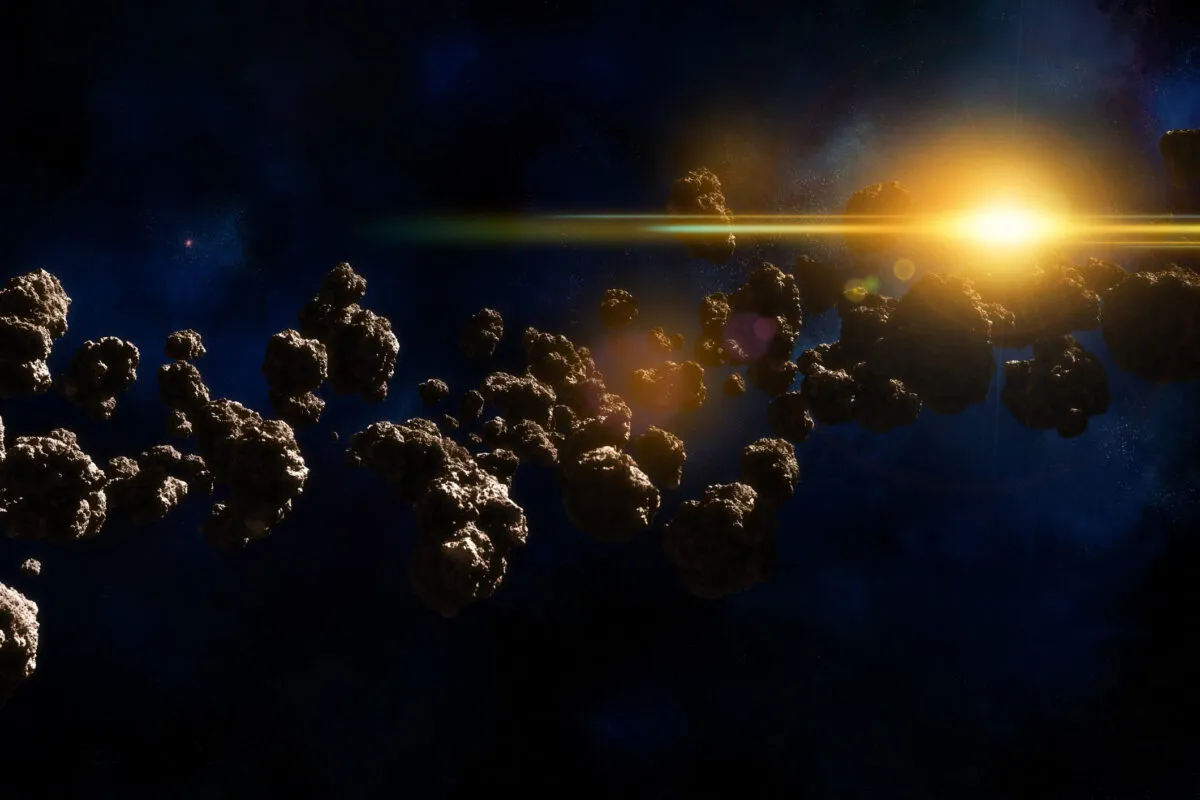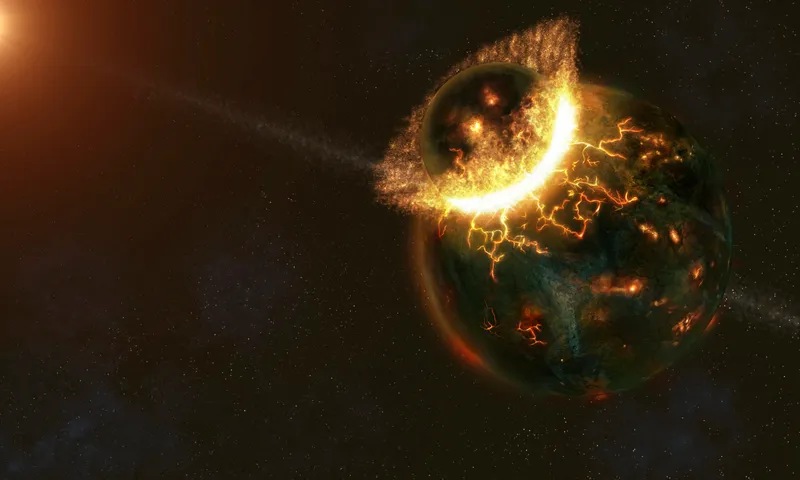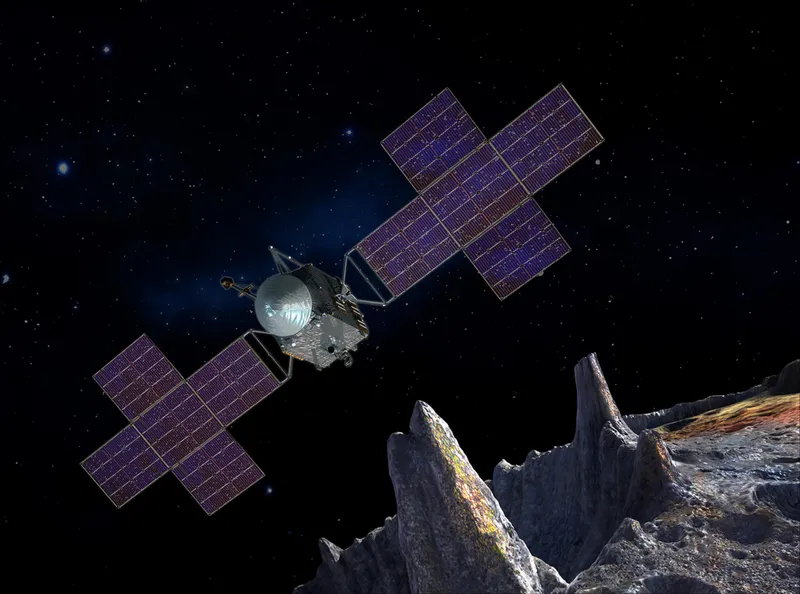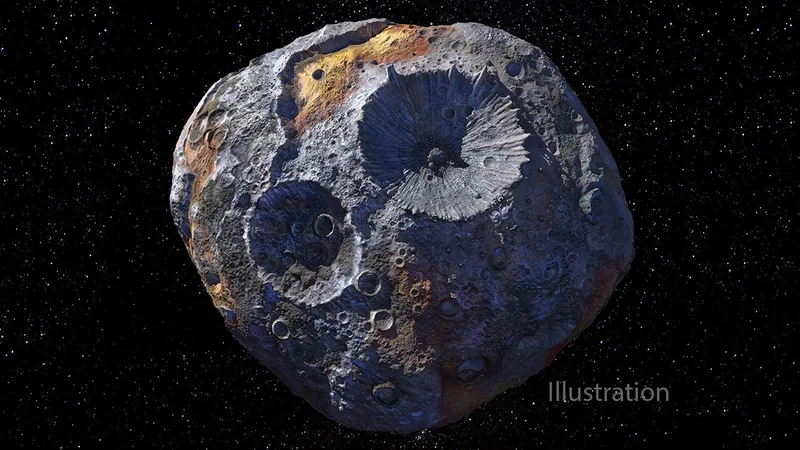Asteroid 16 Psyche, named after the Greek goddess of the soul, was discovered in 1852 by Italian astronomer Annibale de Gasparis.
It was only the 16th asteroid known, but we now know it's among the 12 largest minor planets orbiting the Sun between Mars and Jupiter.
With an average diameter of some 220 kilometres, asteroid 16 Psyche contains about 1% the total mass of the entire asteroid belt.

Moreover, spectroscopic studies and radar observations indicate its surface is very metal-rich.
While astronomers have discovered more of these M-type asteroids (including Lutetia, Kalliope and Kleopatra), Psyche is by far the largest and most massive.
The asteroid is due to be studied by the Psyche mission, set to launch on 12 October 2023.
How did asteroid Psyche form?

Astronomers have speculated that the large chunk of iron and nickel – if that is indeed what Asteroid 16 Psyche is – could be the exposed core of a larger proto-planet.
During the smash-up and merging of smaller planetesimals (the building blocks of planets), the resulting larger bodies start out completely molten.
Heavy metals sink to the core, while lighter rock floats to the top.
Psyche may once have been such a ‘differentiated’ body.
After it cooled down, a collision with another asteroid could have stripped the proto-planet of its rocky mantle, leaving a bare metal core.
While this scenario would provide a completely unique and unprecedented opportunity for scientists to study the core of a differentiated object, there are other possibilities as to the asteroid’s origin.
For example, if a differentiated body is completely shattered by a giant collision, part of the debris could reassemble into a huge ‘rubble pile’, with many metal-rich fragments ending up on the surface.
Or maybe the iron on Psyche’s surface is the result of a hypothesised geological process known as ‘ferro-volcanism’.

What is asteroid Psyche made of?
"The most important question we will answer is ‘what is Psyche?’," says Lindy Elkins-Tanton of Arizona State University, principal investigator of the Psyche mission.
The main reason scientists started to doubt the exposed-core explanation is Psyche’s relatively low density.
The asteroid’s dimensions are known from timing observations of stellar occultations and from high-resolution images obtained with the European Southern Observatory’s Very Large Telescope in Chile.
Studies of Psyche’s gravitational influence on the orbits of other smaller asteroids carried out by Finnish astronomer Lauri Siltala have revealed the object’s mass.
From the known size and mass, Psyche’s mean density turns out to be 3.9g per cubic centimetre.
That's about half the value you would expect for a solid ball of metal.

The density measurements can mean two things.
Either Psyche is mainly rock after all, with patches of iron on its surface – the ‘lava’ plains mentioned before.
Or the asteroid is a porous rubble pile, in which case the iron content could be substantially higher.
In 2019, Francis Nimmo and Jacob Abrahams of the University of California Santa Cruz proposed the theory of (ancient) ferro-volcanism
This is a process you might expect when a newly formed, molten body is cooling down from the outside in.
But a team led by David Cantillo of the University of Arizona carried out laboratory experiments indicating that Psyche’s spectroscopic properties are best explained by a porous body containing up to 82.5% metal, as they wrote in a 2021 paper.
Then there’s the riddle about a possible link with iron meteorites.
These are assumed to be fragments of disrupted differentiated bodies – bodies large enough to have ended up with an iron-nickel core.
"The problem is that the asteroid belt shows limited evidence that so many bodies with cores actually disrupted," says Psyche mission co-investigator Bill Bottke of the Southwest Research Institute in Boulder, Colorado.
"This suggests that we are missing something important about Solar System evolution. Our investigation of Psyche may shed light on this mysterious issue."
Given all of these mysteries, it’s not surprising that Solar System researchers look forward to the launch of the Psyche mission on a SpaceX Falcon Heavy rocket from Kennedy Space Center in Florida.

Asteroid Psyche key facts
- Date of discovery: 17 March 1852
- Average distance to the Sun: 437 million km
- Orbital period: 4.99 years
- Orbital eccentricity: 0.14
- Orbital inclination: 3.1°
- Dimensions: 280 x 235 x 175km
- Surface area: 165,800km2 (about twice the surface of Ireland)
- Mass: 2.3 x 1019kg
- Average density: 3.9g/cm3
- Rotational period: 4.2 hours
- Visual brightness: 9.2–12.2
- Estimated ore value: $10 quintillion
This guide originally appeared in the October 2023 issue of BBC Sky at Night Magazine

